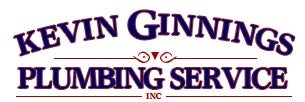Ways to Determine Whether Your Expansion Tank Is Damaged
Your water heater system relies on many components to function well, and one often overlooked but important part is the expansion tank. Known as a water heater expansion tank or thermal expansion tank, this small tank helps manage water pressure when heated water expands within a closed plumbing system. If the expansion tank isn’t working properly, the extra pressure can put stress on your pipes, fixtures, and water heater. This can lead to leaks or more expensive repairs. Understanding how your expansion tank works and how to spot potential problems can help you keep your plumbing in good shape.
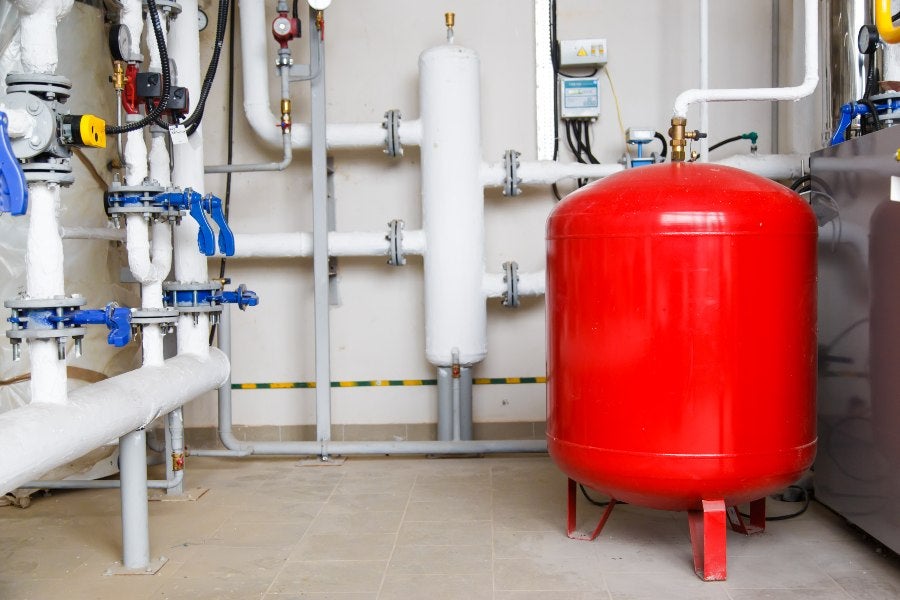
What Is an Expansion Tank and Why Does It Matter?
An expansion tank is a small, secondary tank connected to your water heater. When water heats up, it expands and creates additional pressure in your plumbing system. The expansion tank is designed to absorb this pressure, protecting your pipes and other fixtures from damage.
Without an expansion tank, the extra pressure has nowhere to go, which could eventually lead to leaks or cause stress on your water heater, reducing its lifespan. By handling this pressure, the expansion tank ensures the system operates efficiently and safely.
Signs That Your Expansion Tank May Be Damaged
A damaged or malfunctioning expansion tank often shows signs you can catch if you know what to look for. Here are some of the common indications:
- Inconsistent Water Pressure: If you notice that your water pressure fluctuates, it could mean the expansion tank isn’t functioning as it should.
- Leaks Around the Tank: Water pooling around the tank or dripping from its connections is a strong signal that something is wrong.
- Rust or Corrosion: Visible rust or corrosion on the tank is often a sign of wear and may mean the tank is at risk of failure.
- Unusual Noises: Strange sounds like knocking or tapping in your pipes can suggest the expansion tank is struggling to manage the system’s pressure.
- Problems with the Water Heater: If your water heater is working harder than usual or has trouble maintaining consistent temperatures, the issue may be linked to the expansion tank.
How to Check the Condition of Your Expansion Tank
If you suspect your expansion tank is damaged, there are several steps you can take to evaluate its condition:
- Inspect It Visually
Look for leaks, rust, or any visible signs of damage. A quick inspection can often reveal if something is wrong. - Test the Pressure
Use a pressure gauge to measure the tank’s internal air pressure. Typically, a functional expansion tank should show a reading of 12-15 psi. If the pressure is off, it may need to be adjusted or replaced. - Perform a Tap Test
Gently tap the tank with a wrench. A healthy tank will sound hollow on top and solid at the bottom, indicating proper separation of air and water inside. - Check the Schrader Valve
The Schrader valve, found at the top of the tank, allows you to maintain air pressure. If pressing the valve releases water instead of air, the tank’s internal bladder may be damaged and require replacement.
How to Maintain and Protect Your Expansion Tank
Regular maintenance can keep your expansion tank functioning properly and prevent potential issues. Start by checking the system’s pressure regularly to ensure it stays within a safe range. Pressure that is too high or too low can signal problems that need attention. Additionally, make it a point to inspect the tank at least once a year. Look for leaks, rust, or other visible signs of wear that might indicate the tank is not operating as it should. Another important step is flushing your water heater annually. Over time, sediment can accumulate in the heater, placing unnecessary strain on the expansion tank. Flushing the system helps reduce this stress and improve overall efficiency. Finally, if you’re uncertain about the condition of your expansion tank or suspect an issue, consider calling in a professional. The experts at Kevin Ginnings Plumbing can perform a thorough inspection, identify any problems, and recommend the appropriate repairs or adjustments. Taking these steps can help extend the life of your expansion tank and keep your plumbing system running smoothly.
Contact Kevin Ginnings Plumbing to learn more!
If you live in South Kansas City and think your water heater expansion tank might need attention, Kevin Ginnings Plumbing is here to help. We are happy to assess your water heater, assist you with routine maintenance, and provide service or installation of a new unit. Contact us today for professional service and advice to ensure your plumbing system stays reliable.
How Far Below the Surface Must a Water Line Be Buried?
When installing or repairing water lines, one question often comes up: How deep should they be buried? Proper burial depth prevents freeze damage and ensures that your water line stays operational throughout the year.
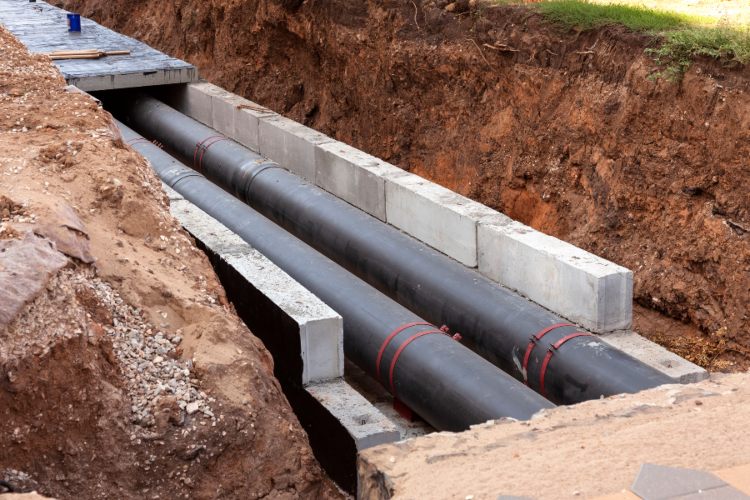
The Importance of Water Line Burial Depth
The correct burial depth for a water line is important for several reasons. Water lines that are too shallow are vulnerable to freezing in cold temperatures and may suffer from damage due to the weight of the earth above them or from landscaping activities. On the other hand, burying a water line too deep can lead to higher installation and repair costs without necessarily offering extra benefits. By finding the optimal depth, you can:
- Prevent Freezing: When water inside a pipe freezes, it expands, potentially causing the pipe to burst. Buried deep enough, pipes are protected from freezing temperatures.
- Reduce Accidental Damage: Water lines buried at the right depth are less likely to be damaged by common yard maintenance, construction, or landscaping activities.
- Maintain Water Flow: Pipes that freeze or crack can cause disruptions in water service. Correct burial depth keeps water flowing consistently.
Proper depth ensures your water line is protected year-round, preventing costly repairs and maintaining the flow of water to your home or business.
How Frost Depth Impacts Water Line Burial
One of the most important factors when determining the water line burial depth is frost depth. Frost depth refers to how deeply the ground freezes during the winter months, and it varies based on climate and soil type. In South Kansas City, the frost depth typically reaches about 36 inches, though unusually cold winters can cause it to go even deeper. Frost depth is significant because water lines installed above the frost line are at risk of freezing and bursting during cold spells. Water lines should be buried six to twelve inches below the frost line to provide an added layer of security against unexpected cold snaps. For South Kansas City residents, this means burying water lines at least 42 inches deep. However, each property is unique, so it’s wise to consult a plumbing professional who can assess your specific conditions.
Factors That Influence Water Line Burial Depth
While frost depth is the most important consideration, several other factors should be considered when determining how deep to bury a water line. Some of the key considerations include:
- Local Regulations: Building codes vary by municipality, and South Kansas City may have specific regulations governing the minimum and maximum burial depth for water lines. Local codes ensure consistency and safety, so be sure to follow them closely. Kevin Ginnings Plumbing makes sure your work is compliant.
- Soil Composition: Soil density plays a significant role in how well the ground insulates water lines. Dense, clay-like soils retain heat better and may not require as deep a burial as sandy or rocky soils, which allow more rapid temperature fluctuations. Kansas City’s varied soil types make it important to assess the soil composition before deciding on a burial depth.
- Water Line Materials: Different pipe materials have varying degrees of durability and tolerance to temperature changes. Materials like copper and PEX are popular due to their strength and resistance to freezing, while some types of PVC may require deeper burial to prevent freezing.
- Weight and Surface Load: If you plan to install a water line under a driveway, parking area, or other locations that bear heavy loads, you may need to bury the line deeper to prevent it from cracking under pressure. The added depth will protect it from the additional weight and stress.
- Potential for Future Landscaping: Anticipating any future landscaping projects can also influence burial depth. If you foresee digging in certain areas, it’s wise to either mark water line locations carefully or opt for deeper burial to reduce accidental interference.
Finding and Repairing Water Lines
Locating an existing water line for maintenance or repair can be tricky, especially if you’re unsure of its depth or placement. At Kevin Ginnings, we use specialized equipment to detect buried water lines without unnecessary digging. This technology allows us to accurately locate water lines using tools like ground-penetrating radar and tracer wires, our team can pinpoint the exact location of water lines, minimizing disruption to your yard or property. Once located, we can identify the issue and offer a targeted repair solution. Trying to locate or dig up your own water line can lead to damage and potential injuries, especially if the line is pressurized. We make sure the job is done safely and accurately.
Key Insights to Remember
Before embarking on any water line installation or repair, here are some takeaways to remember:
- Frost Depth Matters: The local frost depth (around 36 inches for South Kansas City) determines how deep to bury water lines.
- Comply with Local Codes: Local regulations set minimum burial depths, ensuring water lines remain safe from freezing and accidental damage.
- Assess Environmental Factors: Soil type, pipe materials, and surface loads all impact the ideal burial depth for your water line.
- Hire a Professional: Accurate installation requires the right tools and expertise. Kevin Ginnings Plumbing will ensure your water lines are installed correctly and according to code.
Contact Kevin Ginnings Plumbing
Whether you’re installing a new water line, conducting repairs, or simply curious about water line burial depth, the team at Kevin Ginnings Plumbing has you covered. As South Kansas City’s trusted plumbing service provider, we bring years of experience, local knowledge, and industry expertise to every job. We can evaluate your property’s needs, ensure compliance with local codes, and deliver solutions to keep your water lines secure and functional. Contact us today for a free estimate.
What to Do After Sewage Backup or Clog in Your Basement
What to Do After a Sewage Backup or Clog in Your Basement
A sewage backup in your basement can be a messy and overwhelming experience and it’s important to act quickly to protect your home and health. But what should you do when faced with such a situation? In this article, we’ll explain what causes sewage backups, how to recognize the signs, and the steps to take when a sewage backup or clog occurs in your basement.
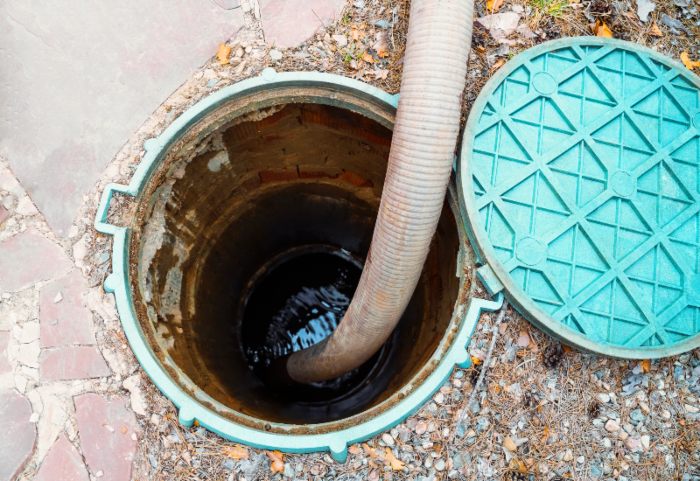
What Are the Sewer and Main Sewer Lines?
The sewer system is responsible for carrying wastewater from your home to a treatment facility. Each home is connected to a main sewer line, which transports all the wastewater from the toilet, sink, showers, and drains. When this line gets blocked or damaged, sewage can back up into your home, often finding its way to the lowest point, your basement.
Sewage backups are not only unpleasant but can also pose serious health risks. Contaminated water can spread bacteria and viruses, making quick action professional help necessary.
What Are the Signs of a Sewage Backup?
Recognizing the signs of a sewage backup early can help you prevent more extensive damage. Here are a few common indicators:
- Gurgling Sounds – If you hear gurgling from your drains or toilets, it may signal a blockage in your sewer line.
- Slow Drains – If multiple drains in your home are slow to clear, it could point to a clog in the main sewer line.
- Unpleasant Odors – Foul smells from your drains or basement indicate that sewage may be accumulating in your pipes.
- Water Backflow – If water or waste begins to back up through your basement floor drain, this is a clear sign of a sewage line problem.
If you notice any of these signs, it’s time to investigate the cause and consider professional intervention.
Most Common Causes of Sewer Backups
Sewer backups can occur for a variety of reasons. Understanding these causes can help prevent future incidents:
- Clogged Pipes – Hair, grease, and other debris can accumulate over time, leading to blockages that prevent wastewater from flowing freely.
- Tree Root Intrusions – Roots from nearby trees can infiltrate and block your sewer line, causing sewage to back up into your home.
- Broken or Collapsed Pipes – Older homes are more prone to pipe damage due to wear and tear or shifting soil, which can disrupt the flow of sewage.
- Heavy Rainfall – When the municipal sewer systems become overloaded during heavy rain, water and sewage can back up into your home.
Knowing the most common causes can help you take preventive measures to avoid future sewer problems.
How to Fix a Sewage Backup
If a sewage backup occurs in your basement, immediate action is essential to minimize damage. Here’s what to do:
- Turn Off the Water Supply – If the backup is related to a clog in your plumbing system, stopping the water flow can prevent more waste from entering your home.
- Avoid Using Any of the Drains in Your Home – Do not flush toilets, run sinks, or use any other fixtures that send water into your plumbing system.
- Ventilate the Area – Open windows and doors in your basement to allow air to circulate and reduce harmful fumes.
- Call a Professional Plumber – Sewage backups are not DIY jobs. A professional plumber can assess the situation, locate the clog, and provide the appropriate solution.
Attempting to fix a sewage backup on your own can expose you to health risks and may cause further damage to your plumbing system. It’s always best to leave it to the professionals.
What to Do If You Have a Sewage Backup
Here are some key steps to take after discovering a sewage backup in your basement:
- Evacuate the Area – Keep children and pets away from the contaminated area to reduce the risk of illness.
- Document the Damage – Take photos and videos of the affected area for insurance purposes. This can help speed up your claim and ensure that you receive the necessary compensation.
- Contact Your Insurance Company – Notify your insurance provider as soon as possible to begin the claims process.
- Arrange for Sewage Backup Cleaning – Professional sewage cleanup is necessary to safely remove contaminated water, disinfect the area, and restore your home.
Professional sewage backup cleaning services ensure that your home is properly sanitized and safe to return to after the backup is being resolved.
Reach Out to the Pros
When you’re faced with a sewage backup in your basement, you need a plumbing team you can trust. Kevin Ginnings Plumbing Services, Inc. has been serving South Kansas City for over 40 years, offering expert sewage backup cleaning and plumbing repair services. We understand the urgency of these situations and provide prompt, reliable service to get your home back to normal.
Our team is experienced in handling everything from simple clogs to major sewage backups. We use advanced tools to locate and fix the problem quickly. We take pride in delivering top-quality workmanship while ensuring your home is protected from future plumbing issues.
For more information about our company and plumbing services, visit our website or contact us to schedule an appointment. We look forward to serving you!
What Is a Plumbing Vent and How Does It Work?
What is a Plumbing Vent, and How Does it Work?
When thinking about your home’s plumbing system, it’s easy to focus on pipes that deliver water or remove waste. However, there’s another important component that often gets overlooked: the plumbing vent. This essential part of your plumbing system helps keep your home safe from unpleasant odors and keeps water flowing smoothly through your pipes. In this article, we’ll explain what a plumbing vent is, how it works, and why it matters for your home.
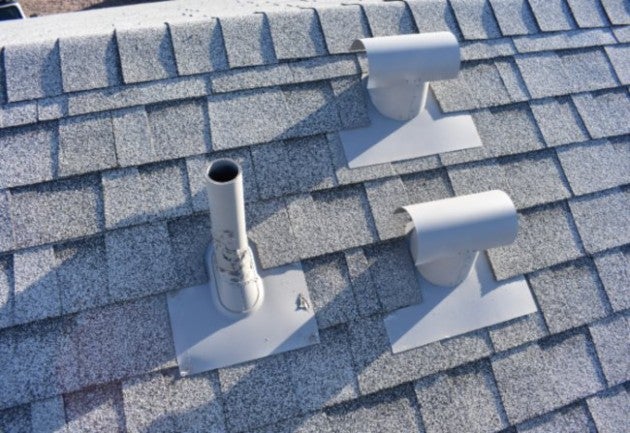
What is a Plumbing Vent?
A plumbing vent, also known as a vent stack or air vent, is a pipe that extends from your plumbing system up through your roof. Its purpose is to regulate the air pressure within the plumbing pipes, allowing waste and water to flow freely out of your home. Without this vent, the water in your drains would move sluggishly, and you might encounter problems like clogged drains or overflowing toilets.
This vent also prevents dangerous sewer gases from entering your home by directing them safely outside when it’s working properly. It’s a simple yet essential part of keeping your plumbing system functioning smoothly.
The Vent Pipe’s First Benefit – Maintaining Air Pressure
The primary function of a plumbing vent pipe is to maintain proper air pressure within your plumbing system. Each time water moves through the pipes, whether from flushing the toilet, washing dishes, or running the shower, air is needed to balance the pressure. Without the vent, negative pressure could develop, causing water to be siphoned out of traps, leading to foul smells in your home. A properly functioning vent ensures air flows into the system to replace this pressure, preventing blockages and maintaining smooth drainage.
Common Types of Plumbing Vents
There are several types of plumbing vents, each suited for different needs within a plumbing system:
- Main Vent Stack – The main vent runs vertically through your home, connecting directly to your roof.
- Branch Vents – Horizontal pipes that connect to the main vent stack to help maintain proper airflow.
- Auxiliary Vent – This vent serves as a backup for branch vents, providing additional airflow as the main system needs it.
- Air Admittance Valve (AAV) – This is a one-way mechanical vent that allows air into the drain system but prevents sewer gases from escaping into your home. AAVs are often used in remodels, where adding a traditional vent might be challenging.
Why is a Plumbing Vent Necessary?
A plumbing vent serves several important functions. Without it, your home’s drainage system would struggle to remove wastewater efficiently, potentially leading to problems like slow drainage, foul odors, or even pipe damage due to the build-up of pressure. In addition, the vent prevents harmful sewer gases from seeping back into your living space, protecting your health and comfort.
The vent also reduces the risk of clogged toilets and slow drains by balancing the air pressure in the pipes If you’re experiencing frequent clogs or a blocked toilet, there could be a problem with your plumbing vent.
Potential Vent Pipe Problems
As a part of your home’s plumbing system, vents can develop issues over time. Here are some common problems:
- Clogs – Vents can become blocked by debris such as leaves, bird nests, or even snow. A blocked vent prevents air from flowing freely, which can result in slow drainage or a vacuum effect in your plumbing.
- Cracks or Leaks – Damage to the vent pipe can lead to water or sewer gas leaks. This can be caused by weather, animals, or simply age-related wear and tear.
- Improper Installation – If a vent is not installed correctly, it won’t be able to perform its job, leading to air pressure imbalances and drainage issues.
What Are The Common Issues with Plumbing Vents and Pipes?
Problems with plumbing vents are often the culprit behind recurring clogs, slow drains, and toilets that frequently back up. For example, if your toilet seems to overflow more often than it should, it could be a sign that the plumbing vent is blocked, preventing proper air circulation. Slow drainage in sinks and bathtubs might also be caused by a venting issue rather than a simple clog.
If you’re experiencing these issues, it’s important to contact a professional plumber who can inspect your vent and resolve any problems before they escalate into expensive repairs.
Who to Call for Assistance
At Kevin Ginnings Plumbing Services, Inc. we pride ourselves on our expertise and commitment to customer satisfaction. With years of experience serving South Kansas City, we understand the ins and outs of plumbing systems and can tackle even the most challenging vent-related issues. Whether you need toilet repair, vent inspection, or a solution to a blocked toilet, we’re here to help.
Our team uses the latest tools and techniques to diagnose and fix plumbing vent problems quickly and efficiently, restoring your home’s plumbing to peak performance. We believe in clear communication, quality workmanship, and providing peace of mind to our customers. When you choose us, you’re partnering with professionals who care about your home as much as you do.
For more information about our company and plumbing services, visit our website or contact us to schedule an appointment. We look forward to serving you!
Why is My Toilet Continuously Overflowing?
Why Does My Toilet Overflow?
An overflowing toilet is a common household issue, but that doesn’t make it any less stressful. Understanding the causes of toilet overflows can help you address the problem more effectively, whether you need a quick DIY fix or professional help. In this article, we’ll explain why your toilet may be overflowing and when it’s time to call in the pros.
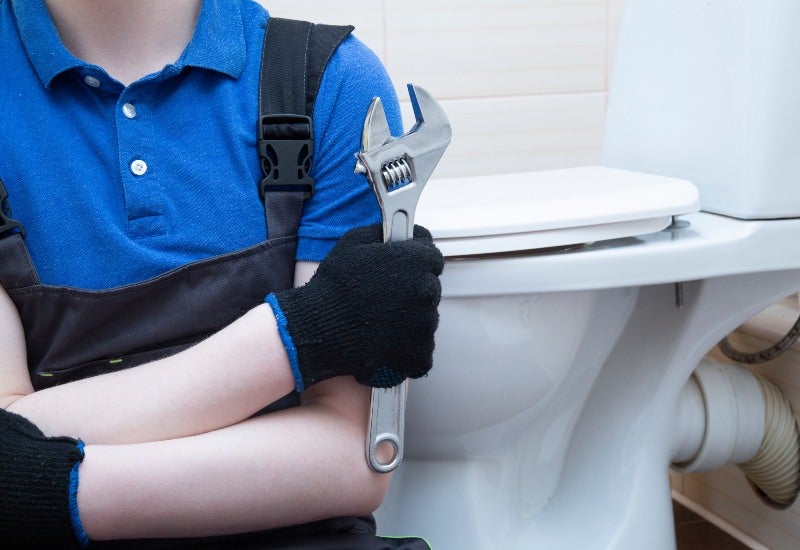
Potential Causes of an Overflowing Toilet
Several factors can lead to a toilet overflow, some more serious than others. Here are the most common causes:
- Clogged Drains – Blockages in the toilet drain are among the most frequent causes of an overflow. This can happen due to excessive toilet paper, flushed foreign objects, or a buildup of waste.
- Clogged Plumbing Vent – Your toilet’s plumbing vent allows air to flow into the plumbing system, maintaining the correct pressure for water and waste to move. A clogged vent can disrupt this balance, leading to sluggish drainage and potential overflow.
- A Malfunctioning Float Mechanism – The float mechanism inside the toilet tank controls the water level. If it’s not working correctly, the tank may overfill, causing water to overflow into the bowl.
- Sewer Line Backup – A more serious cause is a blockage in the main sewer line, which can force wastewater back into your home, leading to an overflowing toilet.
Toilet Backup vs. Overflow: What’s the Difference?
While the terms are often used interchangeably, a backup and an overflow are not quite the same. A toilet backup occurs when there’s a problem in your plumbing system, such as a clogged sewer line or an issue with your plumbing vent. In contrast, a toilet overflow happens at the fixture level, typically due to clogs in the drain or problems with the toilet itself.
Understanding the difference can help you determine whether you can address the issue on your own or if you need to hire a professional.
What to Do If Your Toilet Overflows
If your toilet overflows, acting quickly can minimize damage:
- Turn Off the Water – Locate the shut-off valve behind the toilet and turn it off to stop the flow of water.
- Clean Up Immediately – To avoid water damage, soak up the water immediately. Use towels or a mop, and be mindful of any nearby electrical devices.
- Plunge the Toilet – If the overflow is caused by a clog, using a plunger might help dislodge the blockage. Make sure to cover the drain completely and apply firm pressure.
- Call a Professional – If the problem persists or if you suspect a more serious issue, such as a sewer line backup or clogged plumbing vent, it’s time to contact a plumber.
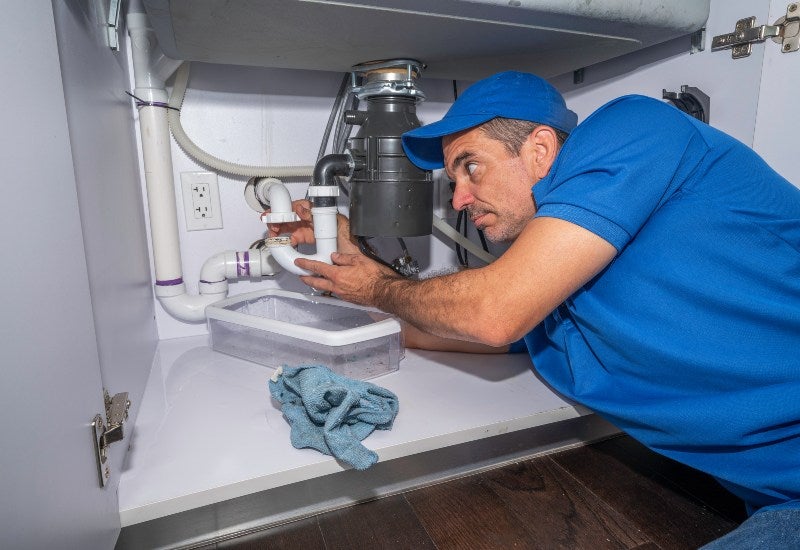
Can You Prevent Toilet Overflows?
Taking proactive measures can help prevent future overflows. Here are some tips:
- Use Less Toilet Paper – Using large amounts of toilet paper can easily clog your drains. Encourage family members to use only what’s necessary to get the job done.
- Be Mindful of What You Flush – Never flush items like sanitary products, wipes(even those marked “flushable”), or other non-flushable materials.
- Install Plumbing Vent Covers – Keeping your plumbing vent protected from debris can help prevent clogs.
- Regular Maintenance – Have a professional inspect your plumbing system regularly, especially the plumbing vent, to make sure it’s in good working order.
When to Hire a Professional
While minor overflows can sometimes be handled with a plunger, persistent problems may indicate deeper issues that require a plumber’s expertise. If you notice repeated overflows, foul smells, or slow drainage, it’s probably time to call in the professionals.
Who to Call for Help
Kevin Ginning Plumbing has years of experience handling toilet overflows, clogged plumbing vents, and sewer line backups. We have been a trusted name in Kansas City plumbing for over 40 years, serving both residential and commercial customers. We offer expert plumbing solutions, including water heater repair, pipe inspections, and drain cleaning. Our licensed, insured team guarantees high-quality work, maintaining an A+ BBB rating. With a focus on honesty and reliability, we provide upfront pricing and hassle-free service. Whether you need a minor repair or a system overhaul, we are ready to serve with professionalism and a commitment to long-term customer relationships.
For more information about our company and our plumbing services, visit our website or contact us to schedule an appointment. We look forward to serving you!
Ask the Inspector: Plumbing Checkup
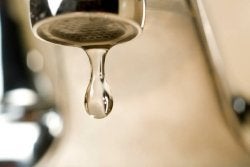 By Rich Duerkop
By Rich DuerkopWhat should I be aware of about the plumbing in my home, both new and older construction?
You should frequently check all faucets and other valves for leaks.
Turn the water on, look under the sink, and run your hand around the shut-off and drain pipes to make sure they are not leaking. Then go down to the basement and check for leaks. A good way to remind yourself is to mark your calendar and check these areas every change of the season.If you see any water staining in the walls or the ceiling call a licensed plumber right away.
If your water pressure in an older home appears marginal or poor remember your old pipes may be corroded. I have seen pipes so full of corrosion the opening is no bigger than the lead of a pencil. When pipes get like this the only thing you can do is call a licensed plumber and have them removed.
When you check the toilet listen for hissing sounds that may indicate that it is running and wasting water; new parts may need to be added. If the toilet is loose I would recommend you pull the toilet, evaluate the floor, and replace the wax seal.
In older homes, if you have an old toilet I would recommend replacing them. Some of the old toilets would flush on five gallons of water where the new ones flush on about a gallon and a half. This is a real water saver.
To help extend the life of your water heater drain off about three gallons of water out of the faucet at the lower part of the heater. This helps remove sediment that builds upon the bottom of the tank. I would do this about every three months.
Everyone in the house should know where the main water shut-off is, in case you have to shut off the water to the whole house if there is an emergency. I recommend tagging the valve so it is easier to find especially for children.
Check all shut-off valves throughout the house for leaks. In older homes many times there are no shuts-offs under the sinks and other water lines. I would recommend installing them; that way you can turn off the water right at the source of the leak instead of having to run down to the basement to close the main shutoff.
Did you know? We are a Best Plumbers Award Winner!
You will receive excellent results working with master plumbers from Kevin Ginnings Plumbing Services. Our commercial and residential plumbing company is backed by more than 40 years of experience, and we have proudly served the area for more than 28 years.
The most trusted plumbers in the Kansas City, Overland Park & all of Johnson County. From plumbing fixture upgrades to complete system maintenance and repair, we are here for all of your residential and commercial plumbing needs.
Professionally trained Kansas City plumbing technicians come to your home or business in uniforms to bring you honest and reliable plumbing services every time. Rely on our plumbing professionals in Kansas City for commercial and residential plumbing services.
Kevin Ginnings Plumbing is a full-service plumber that has served the Greater Kansas City area for 3 decades. Our goal: provide fast, high-quality plumbing services for our customers in the Kansas City area.
Kevin Ginnings Plumbing has been providing a full range of plumbing services to customers and communities all across Greater Kansas City & Johnson County, Kansas. Our plumbers are experienced in all aspects of plumbing repair in Kansas City.
Please contact us for additional information or to schedule a service appointment.
Troubleshooting Your Plumbing Problems
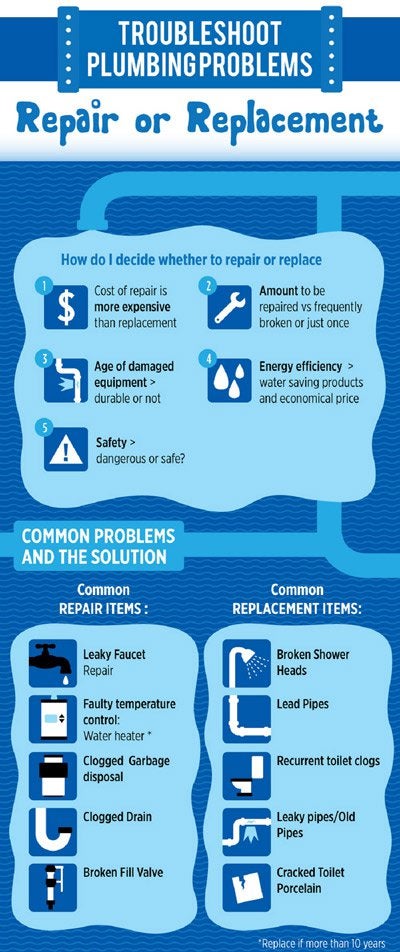
Spike in Your Monthly Water Bill
If you’ve seen an upsurge in your recent monthly water bill, the most likely culprit is a leak in your main water line. Without expert service and repair, you will literally throw money down the drain—not to mention the bigger problems the leak will create as it just grows into flooding of your home or business or a dreaded pipe burst.
Trench-less Technology – Pipe Bursting
In many cases, we can provide you with breakthrough trench-less technology to replace your waterline. Trench-less water line replacement;
- is much more economical
- involves less mess and expense of tearing up your driveway or yard
- takes much less time to accomplish
- offers much less of an environmental footprint
Equipped to solve your waterline problems, 24/7 in the Kansas City area. Our skilled phone and service technicians can quickly hunt down the source of your problem and detail for you the proper solution. We are expert at solving a variety of waterline problems, such as:
- Waterline repairs
- Replacement of damaged pipes
- Redirection of the flow of your current piping system
- and more
Waterline bursts and broken pipes won’t search out a perfect time in your schedule. We are available 24 hours a day, seven days a week, to be at your side to help when water floods your home or business. Our expert technical representatives can, over the phone, walk you through the troubleshooting and shutting off your water main to stem the flow of water into your structure. Next, we send out our technicians to your home to diagnose and cure the problem. Because we’re there for you 24/7, we can remedy your predicament and get you back to a dry, normal life. We take pains to equip our techs’ trucks with all the latest parts, tools, and supplies to maximize our ability to solve your problem in one visit, if possible.
The Dangers of Water Heaters
Classic video on the potential dangers posed by unprotected water heaters. Demonstrates the explosive power of water heaters and the need for temperature & pressure relief valves. This Video is one of Watts instructional videos.
